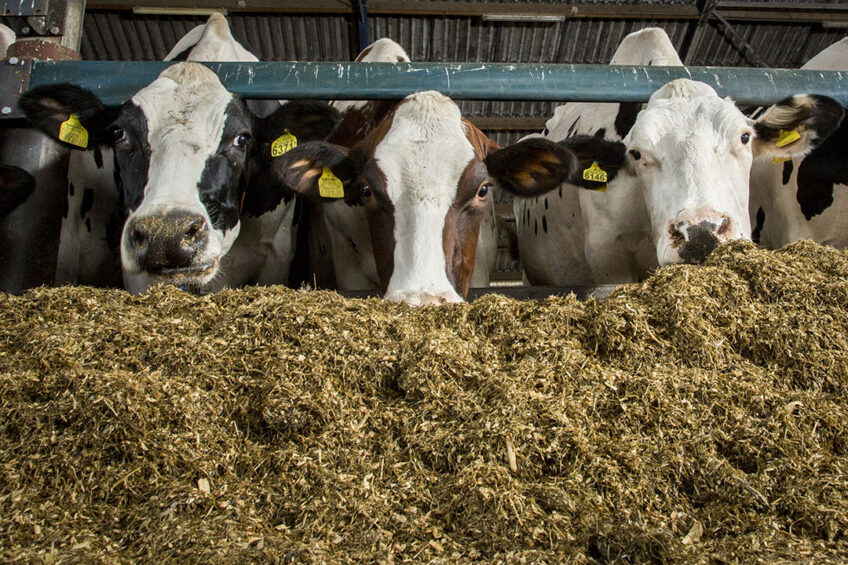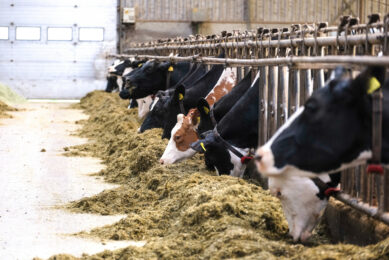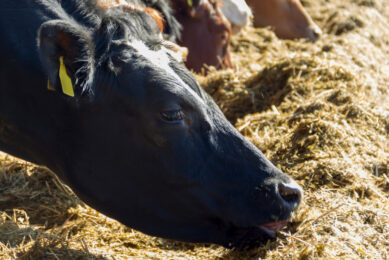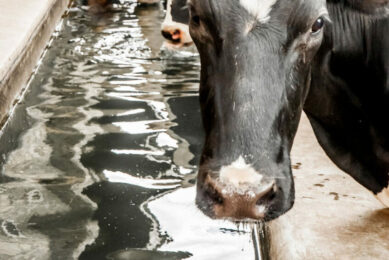Dairy cows benefit from fatty acids in early lactation

Research from Michigan State University (US) shows that fatty acid supplementation through early lactation significantly improves cow productivity.
The benefits of including fat in dairy rations are well known: the energy-dense nutrient is hugely beneficial to meeting increased nutritional requirements as cows simultaneously produce milk while maintaining body condition ahead of breeding. Current research, however, goes to show that understanding the roles of different fatty acids, the building blocks of fat, can significantly improve animal performance. Dr Richard Kirkland, Global Technical Manager for Volac Wilmar Feed ingredients, argues that these findings present dairy producers with opportunities to target specific fatty acid blends according to requirements on individual farms.

“Data indicate key roles for palmitic (C16:0) and oleic (C18:1) fatty acids at different stages of lactation and depending on requirements at farm level,” says Dr Kirkland. “C16:0 is very beneficial in improving milk fat production and yield, but it is now clear that this may be at the expense of body condition and weight loss in early lactation, the knock-on effects of which may include poor fertility.
In contrast, delivering C18:1 to the small intestine, achieved by supplementing with rumen-protected calcium salts, improves total fat digestibility and can enhance fertility through improved egg and embryo development. Unlike C16:0, C18:1 helps partition nutrients toward body fat stores, reducing body condition loss in the critical early lactation period.”
 Mitigating methane production in the rumen
Mitigating methane production in the rumen
Several feeding strategies can be adopted to reduce methane production in the rumen.
The importance of C16:0 to C18:1 ratio
In a recent study presented at the American Dairy Science Conference in June 2020, Professor Adam Lock’s group from the Department of Animal Science (Michigan State University) assessed the response to Mega-Max, a rumen-protected fat supplement which contains a 60:30 ratio of C16:0 to C18:1 on cow performance from calving through early lactation. During the study, dairy cows were offered a control ration with or without supplementation with the fat supplement from calving until 24 days in milk. From days 25-67 in milk each group was further subdivided into control or supplemented rations.
Throughout the fresh period (days 1-24 in milk), control and fat supplemented cows maintained similar body condition. However, the fat supplemented group saw notable increases in milk fat percentage and yield, resulting in 3.1 kg more energy corrected milk than the control group,” explains Prof Lock.
“Supplementing cows in the fresh period and then throughout the peak period (days 25-67 in milk), had no effect on dry matter intake but increased milk yield by 5.1 kg per day and milk fat content by 0.2%. This led to a significant increase in milk fat yield from 1.76 kg to 2.07 kg per day in control and fat-supplemented treatments, respectively. Crucially, this was achieved without increased loss of body weight or condition score.”
 Eucalyptus reduces methane in dairy calves
Eucalyptus reduces methane in dairy calves
Mitigating methane production is still a major concern in dairy production.
Managing the C16:0 to C18:1 ratio through lactation
This new study goes to show that fatty acid profile through early lactation is key to ensuring that production responses resulting from supplementation with fat do not push the cow into further negative energy balance. John Newbold, Professor of Dairy Nutrition at Scotland’s Rural College argues that these findings highlight the opportunity to manage the C16:0 to C18:1 ratio through lactation. “It is clear that when considering fat supplements for dairy cows, lower C16:0, with higher C18:1, supplements are most appropriate through early lactation to help partition nutrients toward body reserves and prevent excessive body condition loss. Furthermore, providing more C:18.1 to the ovary is beneficial for development of embryos and the improved digestibility provides an additional boost in megajoules,” explains Prof Newbold.
 Dairy giant starts trial with seaweed to reduce emissions
Dairy giant starts trial with seaweed to reduce emissions
Dairy giant Fonterra is partnering with Australian company Sea Forest to see if using seaweed in cows’ feed can reduce emissions from commercial dairy herds.
Meeting specific nutritional requirements
When it comes to fat supplements, Dr Kirkland emphasises on the importance of rumen-protection. Rumen-protected fatty acids, such as calcium salt supplements, allow fat to be increased in the diet without negative effects on fibre digestion as is the case with liquid oils or high-fat ingredients such as brewer’s grains.
Rumen-protection is also essential to deliver the unsaturated fatty acids, such as C18:1, to the small intestine for digestion and utilisation by the cow,” concludes Dr Kirkland.
“Working in tandem with sufficient dietary fat supply and most-appropriate fatty acid profiles, rumen-protected fat supplements offer producers the ability to meet specific nutritional requirements at varying stages of lactation to optimise herd performance.”










